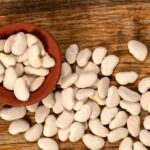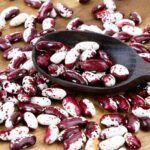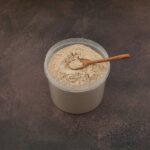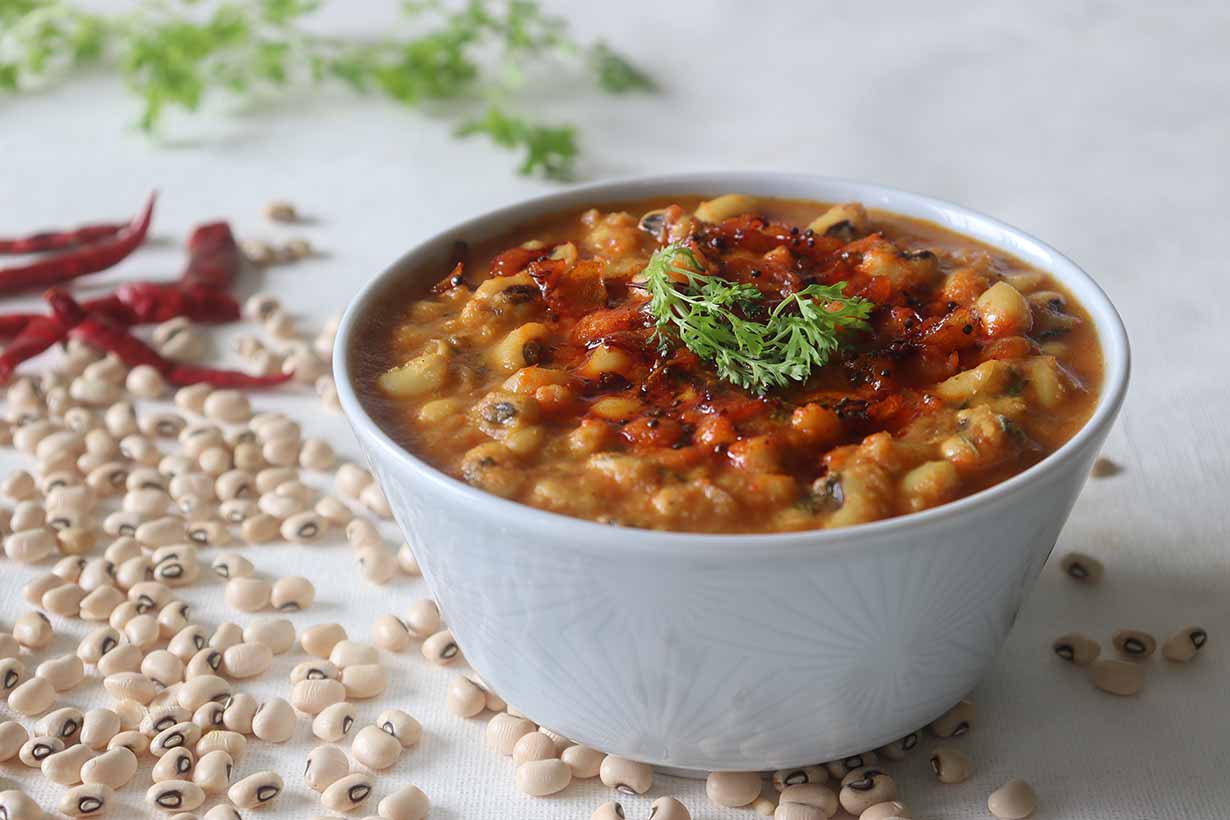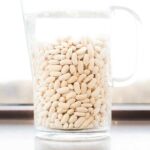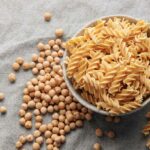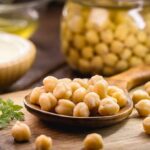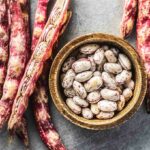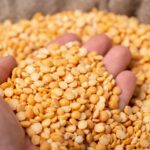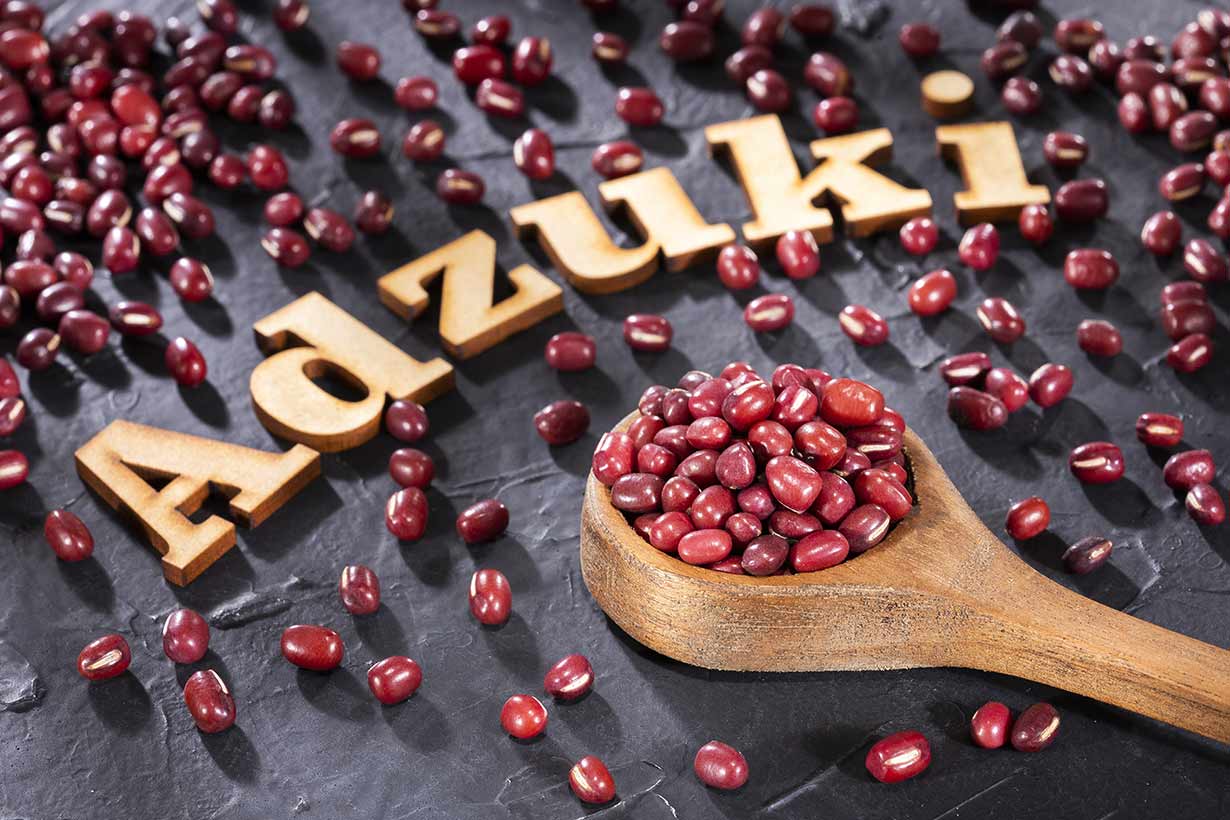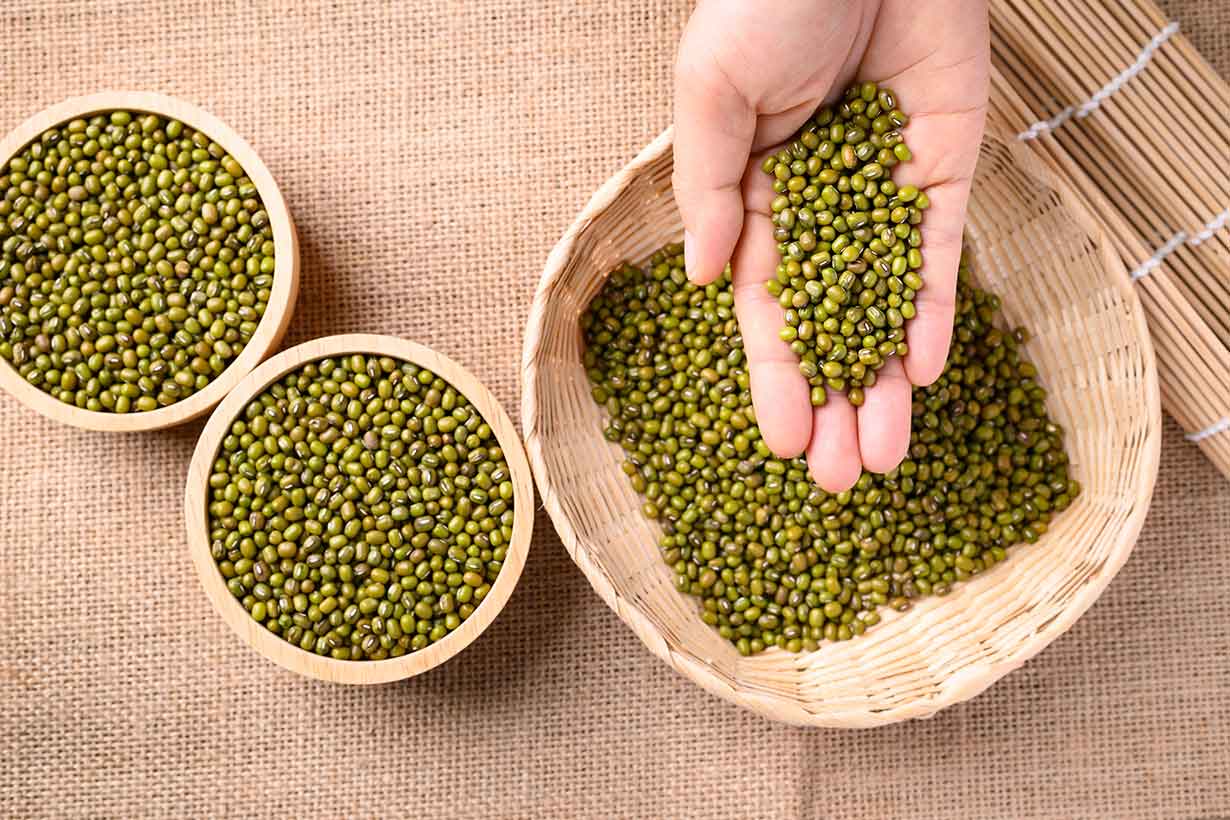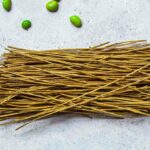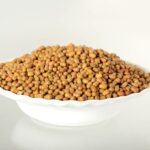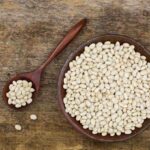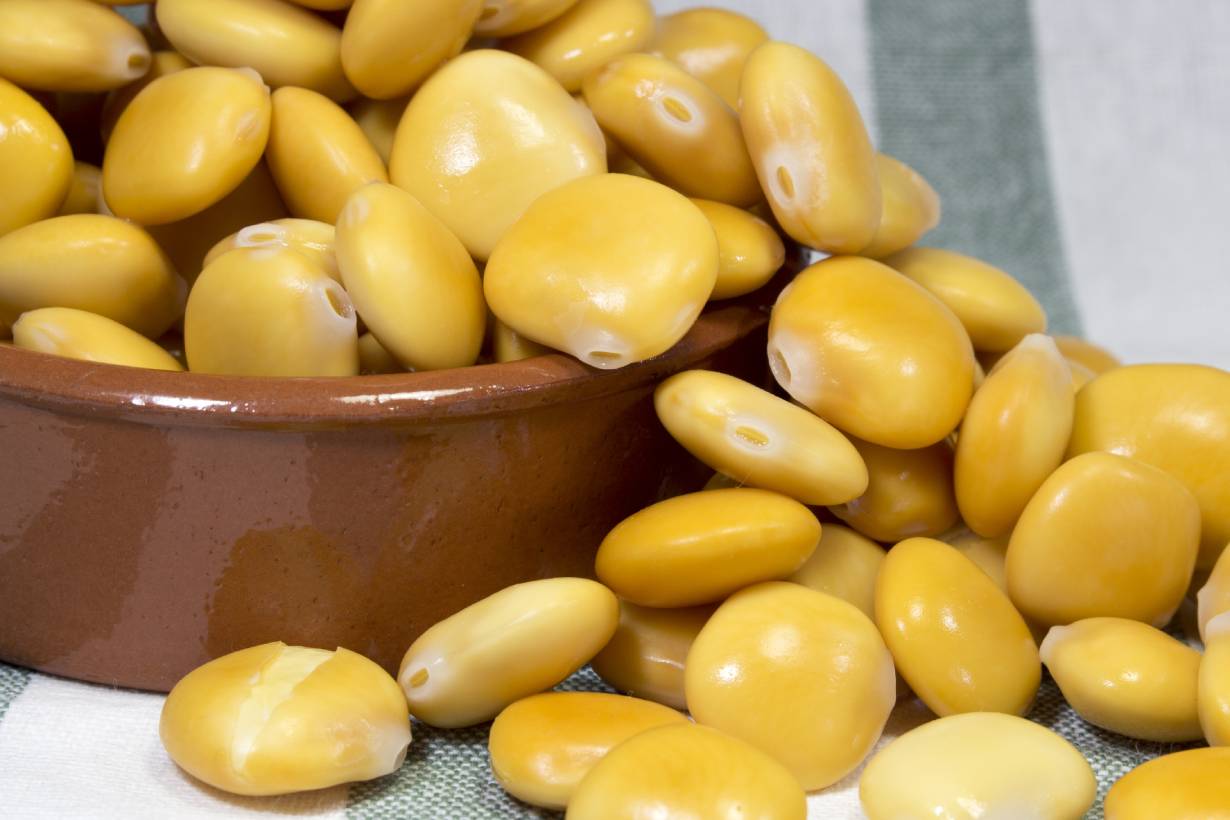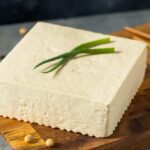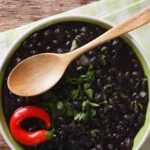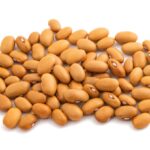25 Types of Legumes and Their Nutritional Values
Legumes are a nutritious type of food, and they are a staple around many parts of the world.
The word ‘legume’ refers to any plant from the Fabaceae family of plants.
In dietary terms, a legume refers to the edible fruit or seed of the plant, and it includes beans, chickpeas, lentils, peas, pods, and more.
Although the terminology can be confusing, legumes and pulses have different meanings. Legumes are the overall group, while pulses are the dried seeds from legume plants (such as kidney beans, lentils, and split peas).
This article examines common varieties of legumes and their nutritional values, using data from the USDA FoodData Central database.
For each legume variety, you can see its basic nutritional profile.
Table of contents
- 1) Adzuki Beans
- 2) Anasazi Beans
- 3) Black Beans
- 4) Black Turtle Beans
- 5) Black-Eyed Peas
- 6) Borlotti Beans
- 7) Cannellini Beans
- 8) Chickpeas
- 9) Edamame
- 10) Fava Beans
- 11) Green Peas (Garden Peas)
- 12) Great Northern Beans
- 13) Kidney Beans
- 14) Lentils
- 15) Lima Beans
- 16) Lupin Beans
- 17) Moth Beans
- 18) Mung Beans
- 19) Navy Beans
- 20) Peanuts
- 21) Pinto Beans
- 22) Sugar Snap Peas
- 23) Soybeans
- 24) Split Peas
- 25) Tepary Beans
- Nutritional Comparison Table
- What Benefits Do Legumes Have?
- Legume Products
- Common Questions About Legumes
- Final Thoughts
1) Adzuki Beans
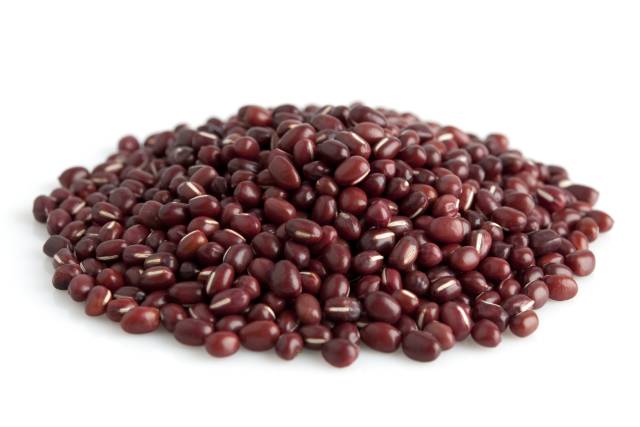
Adzuki beans are small beans mainly grown in the East Asian countries of China, Japan, and South Korea.
While adzuki beans are commonly red, they can come in a wide range of colors.
Nutritionally, adzuki beans are a rich source of fiber and protein.
Per 100-gram serving, dried adzuki beans provide the following nutritional values (1):
- Calories: 329 kcal
- Carbohydrates: 62.9g
- Fiber: 12.7g
- Fat: 0.53g
- Protein: 19.9g
See this review of the nutritional benefits of adzuki beans for a complete guide.
2) Anasazi Beans
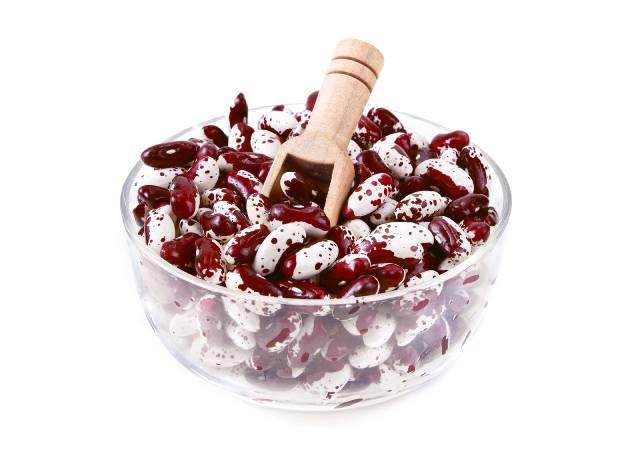
Anasazi beans have a unique red and white appearance and, as a heirloom bean, they have a long history.
They have a soft and mild flavour, and they work well in a wide variety of dishes.
Anasazi beans are medium in size and, based on their dried weight, they provide the following nutritional properties per 100 grams (2):
- Calories: 343 kcal
- Carbohydrates: 60.0g
- Fiber: 14.3g
- Fat: 0g
- Protein: 22.9g
See the following comprehensive guide to Anasazi beans for more information:
Anasazi Beans: a Nutritional Guide
3) Black Beans
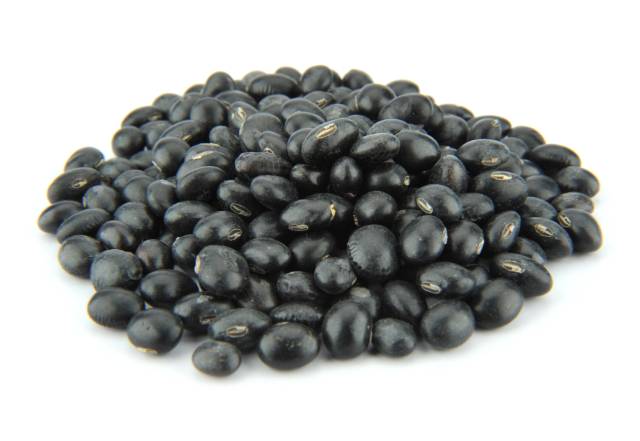
Black beans, also known as black soybeans, are native to East Asia.
Although they have a different taste to yellow soybeans, black beans are used in a similar way.
These beans feature in a wide range of foods, from black bean natto to black bean soy milk.
They are also used to make several fermented soy products, including fermented black bean paste, known as douchi.
Per 100 grams dried, black beans offer the following nutrient values (3):
- Calories: 341 kcal
- Carbohydrates: 62.4g
- Fiber: 15.5g
- Fat: 1.42g
- Protein: 21.6g
4) Black Turtle Beans
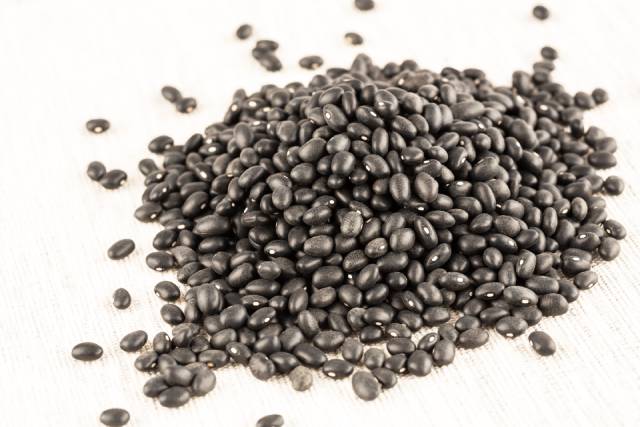
Despite looking very similar to black soybeans, the black turtle bean is native to the American continent and slightly smaller.
It is slightly different nutritionally too. The nutritional values for 100 grams of dried black turtle beans are as shown below (4):
- Calories: 339 kcal
- Carbohydrates: 63.2g
- Fiber: 15.5g
- Fat: 0.9g
- Protein: 21.2g
Black turtle beans are a common ingredient in Mexican cuisine.
See this nutritional guide to black turtle beans
5) Black-Eyed Peas
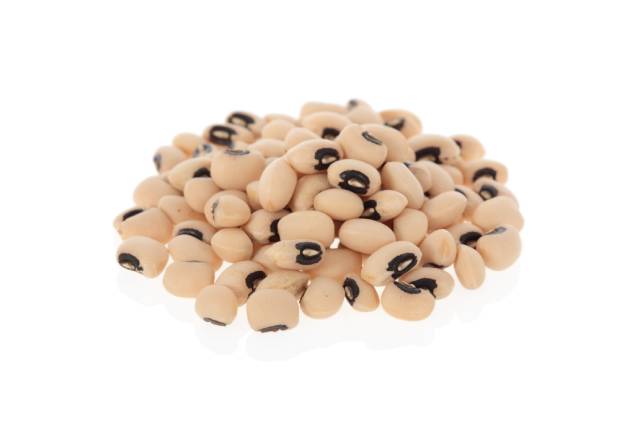
Black-eyed peas are also known as cowpeas, and they originated in the African continent (5).
This popular legume has white skin with a small black “eye” area. Despite the ‘pea’ part of the name, black-eyed peas are a bean.
Regarding their nutritional values, 100 grams of dried black-eyed peas supplies (6):
- Calories: 336 kcal
- Carbohydrates: 60.0g
- Fiber: 10.6g
- Fat: 1.26g
- Protein: 23.5g
See this full guide to black-eyed peas for more information
6) Borlotti Beans
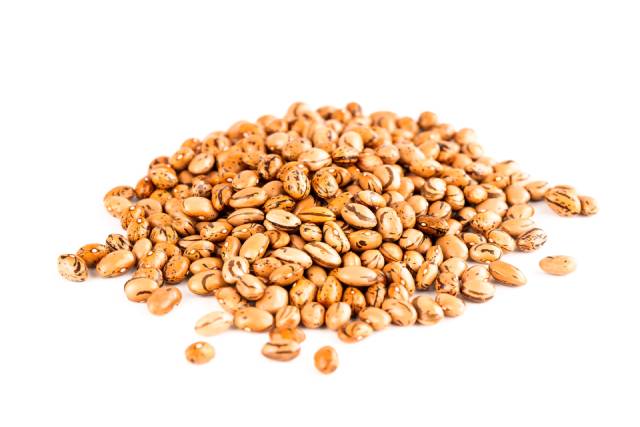
Borlotti beans are also known as cranberry beans, and they have a speckled appearance with a beige base color covered with reddish streaks.
Nutritionally, 100 grams of dried borlotti beans provides (7):
- Calories: 335 kcal
- Carbohydrates: 58.0g
- Fiber: 24.0g
- Fat: 1.0g
- Protein: 23.0g
To learn more about borlotti beans, please refer to this complete nutritional guide:
What Are Borlotti Beans? Nutrition, Benefits, and Uses
7) Cannellini Beans
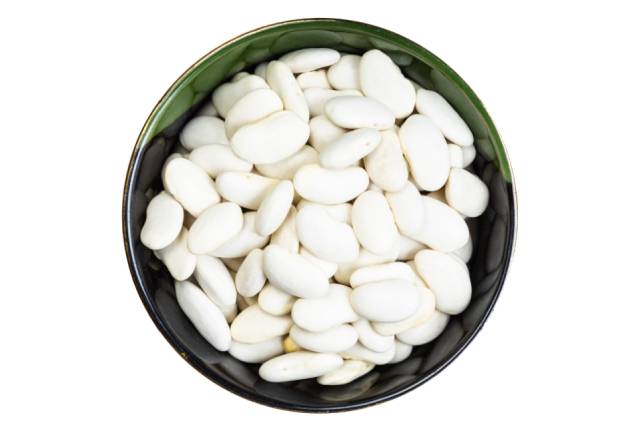
Cannellini beans are a widespread variety of white bean. Additionally, they are the largest common white bean.
The above picture shows that cannellini beans are large, oval-shaped, and bright white.
The beans are a variety of kidney beans, and they are relatively similar to red kidney beans nutritionally.
Per 100 grams, dried cannellini beans have the following basic nutritional profile (8):
- Calories: 333 kcal
- Carbohydrates: 60.3g
- Fiber: 15.2g
- Fat: 0.85g
- Protein: 23.8g
See this complete nutritional guide to cannellini beans for more information on their properties.
8) Chickpeas
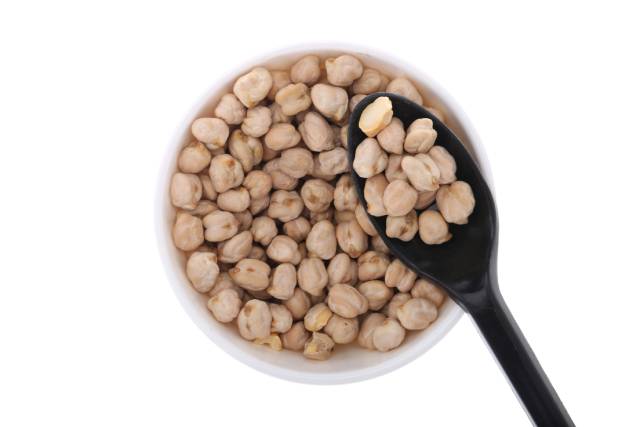
Chickpeas have an interesting appearance, and they look somewhat similar to nuts.
These legumes are otherwise known as garbanzo beans, and they are thought to have originated in the Middle East (9).
Chickpeas remain immensely popular in their place of origin, and they feature in a wide range of condiments, curries, and other dishes. Additionally, they are the primary ingredient in the famous condiment hummus.
Nutritionally, 100 grams of dried chickpeas provides the following values (10):
- Calories: 378 kcal
- Carbohydrate: 63.0g
- Fiber: 12.2g
- Fat: 6.04g
- Protein: 20.5g
In addition, chickpeas are a significant source of manganese, folate, and copper.
See this complete nutritional guide to chickpeas for more information.
9) Edamame
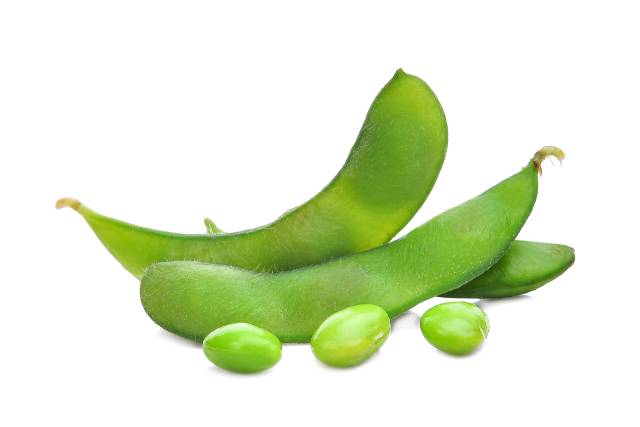
Edamame is the name for immature (green) soybeans that grow within their pod.
While edamame is technically a legume, it is often sold or served as a vegetable.
Edamame is available worldwide, but it is particularly prevalent in Japanese cuisine. It also works well within stir-fries.
According to the USDA data entry for frozen edamame, 100 grams provides the following nutritional values (11):
- Calories: 121 kcal
- Carbohydrate: 8.91g
- Fiber: 5.2g
- Fat: 5.2g
- Protein: 11.9g
Edamame offers a broad range of vitamins and minerals, and it is high in folate.
10) Fava Beans
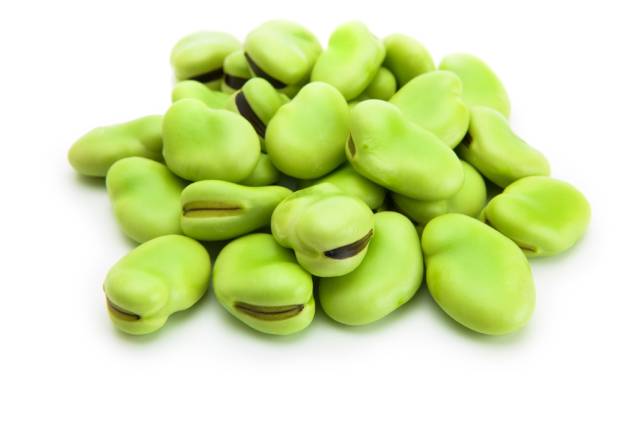
Fava beans are also known as broad beans, and they are available to buy fresh or dried.
These beans are quite nutritious, and they offer a good amount of protein, fiber, copper, folate, and manganese (12).
Per 100 grams, dried fava beans provide (12):
- Calories: 341 kcal
- Carbohydrate: 58.3g
- Fiber: 25.0g
- Fat: 1.53g
- Protein: 26.1g
11) Green Peas (Garden Peas)
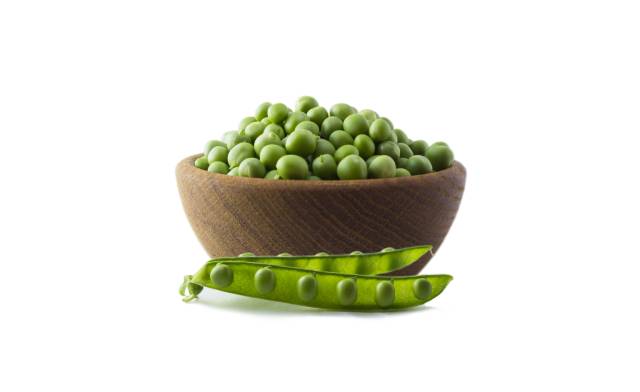
Despite most people thinking green peas are a vegetable, they are a type of legume.
However, unlike most legumes, peas are usually consumed in their fresh and immature green form.
Per 100-gram (raw) serving, green peas provide the following nutritional values (13):
- Calories: 81 kcal
- Carbohydrate: 14.4g
- Fiber: 5.7g
- Fat: 0.4g
- Protein: 5.42g
12) Great Northern Beans
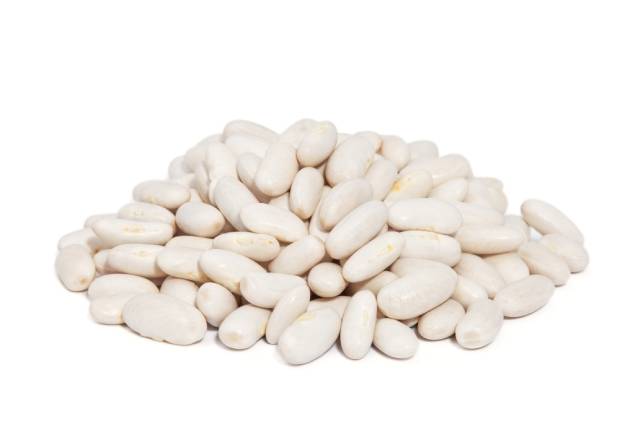
Alongside cannellini beans, Great Northern beans are another popular white bean variety.
Although similar to cannellini beans in taste and nutritional value, Great Northern beans are slightly smaller.
Similar to other white bean varieties, Great Northern beans are an excellent source of fiber and protein.
Here are the nutritional values for 100 grams of dried Great Northern beans (14):
- Calories: 339 kcal
- Carbohydrates: 62.4g
- Fiber: 20.2g
- Fat: 1.14g
- Protein: 21.9g
13) Kidney Beans
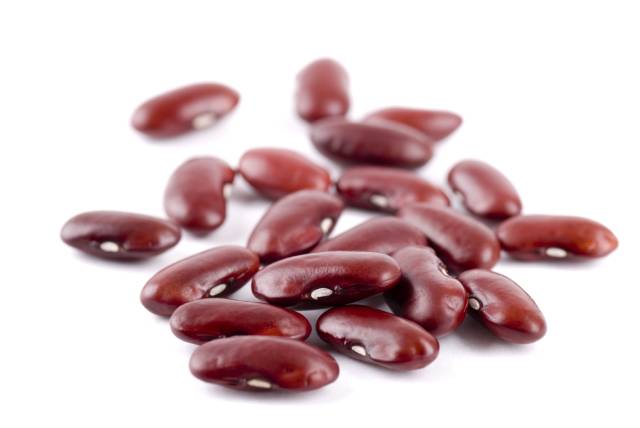
Kidney beans come in several different colors, from black to red.
However, red kidney beans are by far the most common variety.
Interestingly, kidney beans take their name through their shape, color, and resemblance to a real kidney.
Kidney beans are among the most nutritious legumes, and 100 grams of dried beans contains (15):
- Calories: 337 kcal
- Carbohydrate: 61.3g
- Fiber: 15.2g
- Fat: 1.06g
- Protein: 22.5g
As the nutritional values show, red kidney beans offer higher protein and fiber proportions than most legumes.
14) Lentils
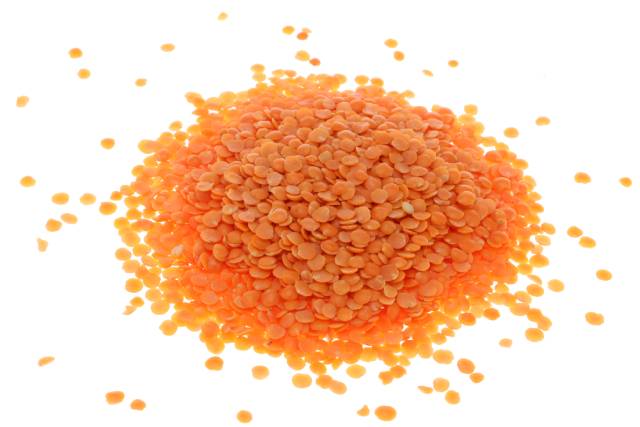
Lentils are one of the most popular legumes, and they come in colors ranging from green and black to orange and yellow.
These legumes commonly feature in dishes worldwide, including lentil soup and various curries.
Nutritionally, dried lentils provide the following nutrients per 100 grams (16):
- Calories: 352 kcal
- Carbohydrate: 63.4g
- Fiber: 10.7g
- Fat: 1.06g
- Protein: 24.6g
15) Lima Beans
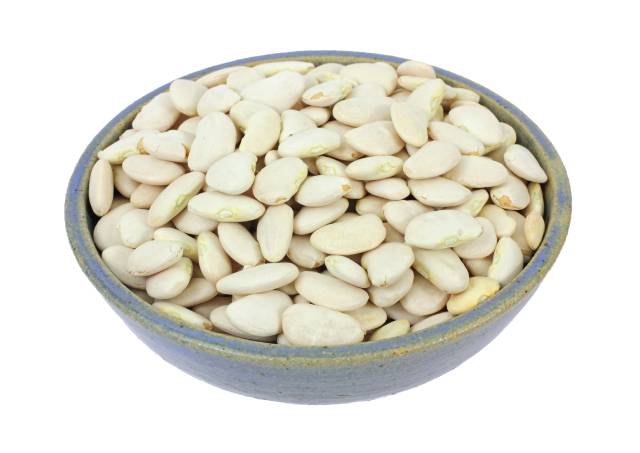
Lima beans are large white beans but smaller than cannellini and Great Northern beans.
It is relatively easy to find them for sale in either dried or canned form.
In some parts of the world, this legume is more commonly referred to by ‘butter beans.’
Lima beans are a good source of nutritional value, and they are high in copper, folate, and thiamin (17).
The beans offer the following nutrition profile per 100 grams dried (16):
- Calories: 338 kcal
- Carbohydrate: 63.4g
- Fiber: 19.0g
- Fat: 0.69g
- Protein: 21.5g
See this full guide to the nutritional benefits of lima beans
16) Lupin Beans
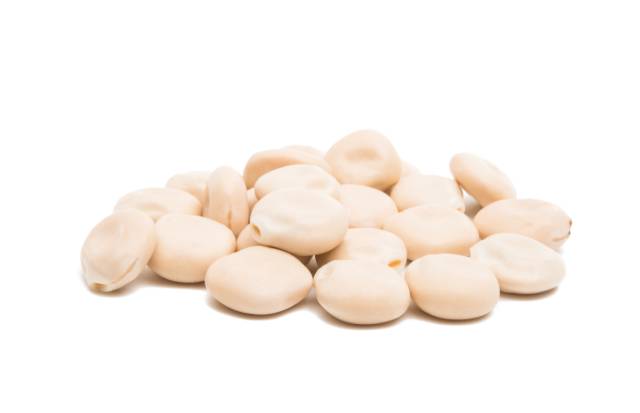
Lupin beans, also known as lupini beans, have been part of the human diet for thousands of years.
These beans are also the most nutritionally unique legumes.
This uniqueness is because they have a relatively low carbohydrate content compared to other dried legume varieties. However, despite this, they are incredibly high in fiber and protein.
Per 100 grams, dried lupin beans provide (18):
- Calories: 371 kcal
- Carbohydrate: 40.4g
- Fiber: 18.9g
- Fat: 9.74g
- Protein: 36.2g
See this complete guide to lupin beans and their nutritional benefits for more information.
17) Moth Beans
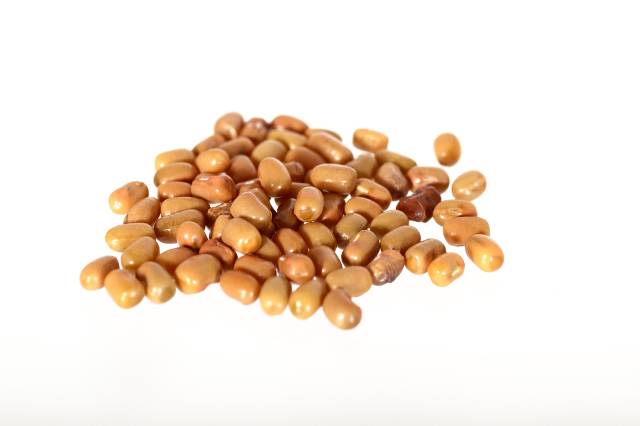
Moth beans are one of the lesser-known legume varieties, but they are extremely popular in India and other countries in South Asia.
These beans, as with most legumes, boast a high provision of fiber and protein.
Each 100 grams of dried moth beans provide the following nutritional values (19):
- Calories: 343 kcal
- Carbohydrate: 61.5g
- Fiber: 15.12g
- Fat: 1.61g
- Protein: 22.9g
For a comprehensive nutritional guide to moth beans, please refer to this article:
What Are Moth Beans? Nutrition, Benefits, Downsides
18) Mung Beans
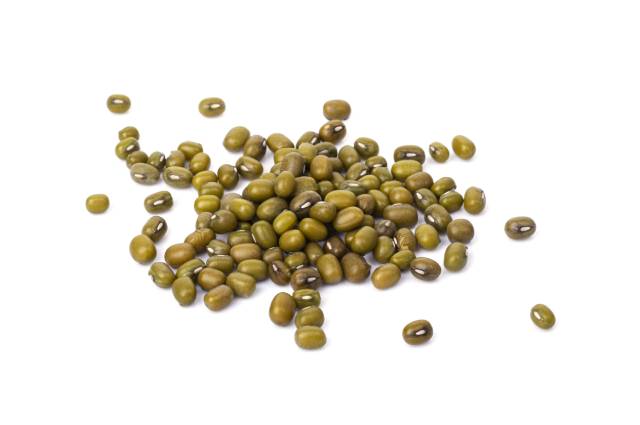
Mung beans are small green legumes that visually resemble green peas.
These small green beans are particularly rich in folate, and they supply a good range of nutrients.
Per 100 grams, dried mung beans have the following nutritional values (20):
- Calories: 347 kcal
- Carbohydrate: 62.6g
- Fiber: 16.3g
- Fat: 1.15g
- Protein: 23.9g
See this nutritional guide to mung beans for more information.
19) Navy Beans
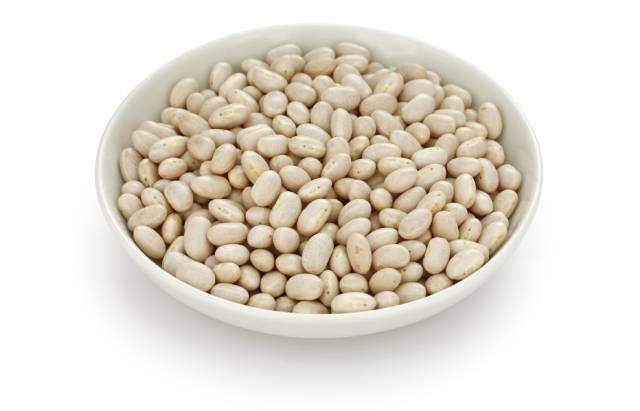
Also commonly known as haricot beans, the navy bean is a small, white-colored legume.
Navy beans are fiber-rich, a good protein source, and an excellent source of folate.
Notably, many tinned legume products use navy beans, such as Baked Beans.
Per 100 grams, here are the nutritional values for dried navy beans (21):
- Calories: 337 kcal
- Carbohydrate: 60.8g
- Fiber: 15.3g
- Fat: 1.5g
- Protein: 22.3g
For a comprehensive nutritional guide to navy beans, please refer to the following article:
A Nutritional Guide To Navy Beans: Nutrients, Benefits, Downsides
20) Peanuts
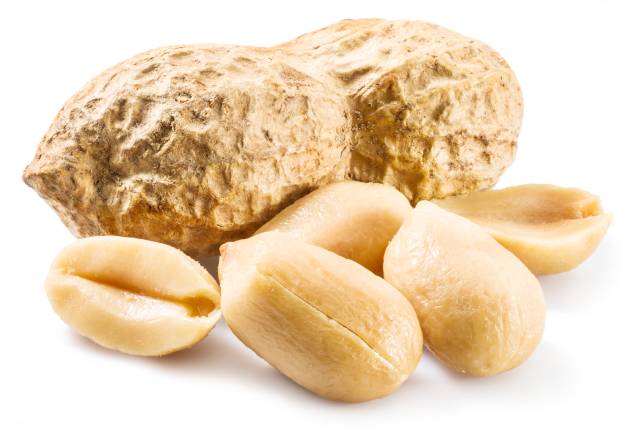
Peanuts are mostly thought of as a variety of nut.
However, botanically peanuts are classed as a type of legume.
That said, peanuts’ nutritional profile is slightly different from most legumes.
For one thing, peanuts are relatively low in carbohydrates and contain high amounts of dietary fat (and calories).
Per 100 grams, the basic nutritional profile of peanuts is as follows (22):
- Calories: 570 kcal
- Carbohydrates: 15.8g
- Fiber: 9.5g
- Fat: 49.6g
- Protein: 26.2g
21) Pinto Beans
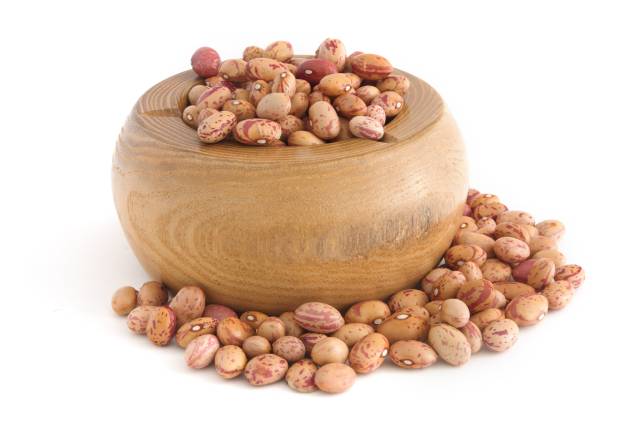
Pinto beans are small legumes with a beige color speckled with brown bits.
These beans are particularly popular in Spanish cuisine, known locally as ‘frijol pinto’ (23).
Per 100 grams, dried pinto beans provide the following nutritional values (24):
- Calories: 347 kcal
- Carbohydrate: 62.6g
- Fiber: 15.5g
- Fat: 1.23g
- Protein: 21.4g
Pinto beans are quite similar to a heirloom bean called Anasazi beans. See this guide for more information:
Anasazi Beans: a Nutritional Guide
22) Sugar Snap Peas
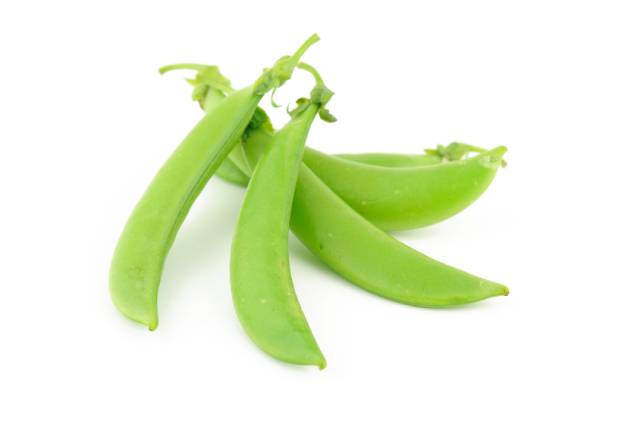
Snap peas are also widely known as sugar snap peas.
These peas are slightly different from regular garden peas as they have edible pods.
Thus, people can eat the whole pea-containing pod, which contains several peas, as one.
Snap peas are a fresh legume, and per-100 gram raw weight, they provide (25):
- Calories: 42 kcal
- Carbohydrates: 7.55g
- Fiber: 2.6g
- Fat: 0.2g
- Protein: 2.8g
23) Soybeans
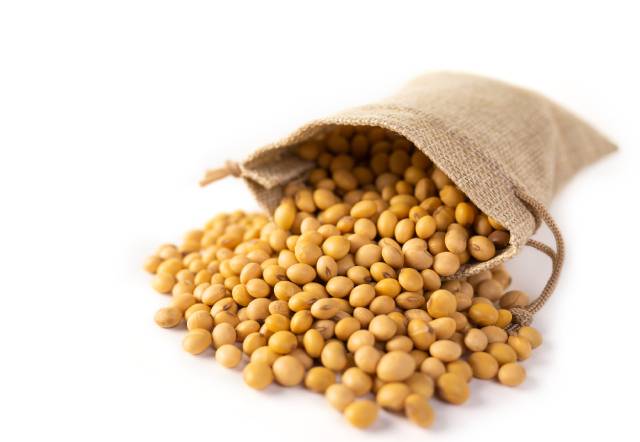
Soybeans are one of the world’s staple foods, and they are the most common plant-based protein source (26).
There are a wide variety of soybean-based foods consumed around the world. Some of the most popular include:
- Cheonggukjang
- Miso
- Natto
- Soy milk
- Soybeans
- Soy protein
- Tempeh
- Tofu
Some of these foods are traditional fermented soy dishes.
Conversely, others are more modern processed options such as extra firm tofu and soy protein supplements.
As for regular soybeans, their nutritional values per 100 grams (dried) are as follows (27):
- Calories: 446 kcal
- Carbohydrate: 30.2g
- Fiber: 9.3g
- Fat: 19.9g
- Protein: 36.5g
As shown above, soybeans are a rich source of protein, and they also provide a moderately high amount of dietary fat.
24) Split Peas
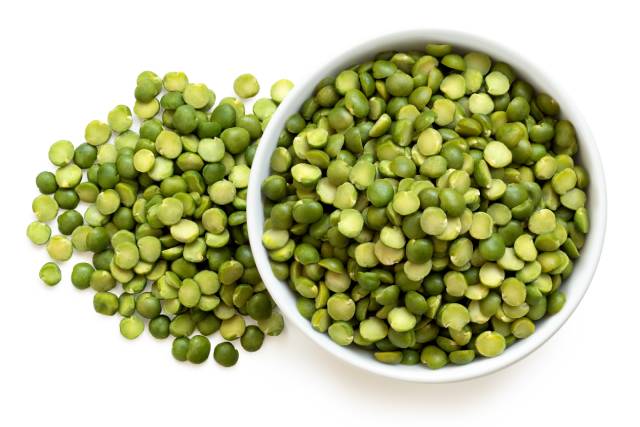
Split peas look slightly like lentils, but they are an entirely different type of legume.
Split peas are simply mature green peas that have been dried and had their skin peeled. After this, they are “split” into two halves.
There are also two different colors of split pea: green and yellow.
In terms of nutritional value, dried split peas provide the following profile per 100 grams (28):
- Calories: 364 kcal
- Carbohydrate: 61.6g
- Fiber: 22.2g
- Fat: 3.89g
- Protein: 23.1g
For a comprehensive nutritional guide to split peas and their benefits, please refer to the following article:
Yellow Split Peas: Nutritional Values and Potential Benefits
25) Tepary Beans
Tepary beans grow in the United States and Mexico, and they are a little hard to find than most of the other legumes in this guide.
However, they provide a significant source of fiber, protein, vitamins, and minerals.
Unfortunately, the major nutrition databases, such as the USDA, don’t have an entry for tepary beans based on 100-gram dried weight to enable an accurate comparison.
That said, here is a full nutritional guide to tepary beans, with nutritional data based on cooked weight:
5 Benefits of Tepary Beans (With Nutrition Facts)
Nutritional Comparison Table
The table below shows an at-a-glance comparison of how each legume compares nutritionally per 100 grams, based on their raw (dried) weight.Legume Name Calories Carbohydrates Fiber Fat Protein Adzuki beans 329 kcal 62.9g 12.7g 0.53g 19.9g Anasazi beans 343 kcal 60.0 g 14.3 g 0 g 22.9 g Black beans 341 kcal 62.4g 15.5g 1.42g 21.6g Black turtle beans 339 kcal 63.2g 15.5g 0.9g 21.2g Black-eyed peas 336 kcal 60.0g 10.6g 1.26g 23.5g Borlotti beans 335 kcal 58.0g 24.0g 1.0g 23.0g Cannellini beans 333 kcal 60.3g 15.2g 0.85g 23.8g Chickpeas 378 kcal 63.0g 12.2g 6.04g 20.5g Edamame 121 kcal 8.91g 5.2g 5.2g 11.9g Fava beans 341 kcal 58.3g 25.0g 1.53g 26.1g Green peas 81 kcal 14.4g 5.7g 0.4g 5.42g Great northern beans 339 kcal 62.4g 20.2g 1.14g 21.9g Kidney beans (red) 337 kcal 61.3g 15.2g 1.06g 22.5g Lentils 352 kcal 63.4g 10.7g 1.06g 24.6g Lima beans 338 kcal 63.4g 19.0g 6.69g 21.5g Lupin beans 371 kcal 40.4g 18.9g 9.74g 36.2g Moth beans 343 kcal 61.5g 15.12g 1.61g 22.9g Mung beans 347 kcal 62.6g 16.3g 1.15g 23.9g Navy beans 337 kcal 60.8g 15.3g 1.5g 22.3g Peanuts 570 kcal 15.8g 9.5g 49.6g 26.2g Pinto beans 347 kcal 62.6g 15.5g 1.23g 21.4g Sugar snap peas 42 kcal 7.55g 2.6g 0.2g 2.8g Soybeans 446 kcal 30.2g 9.3g 19.9g 36.5g Split peas 364 kcal 61.6g 22.2g 3.89g 23.1g
What Benefits Do Legumes Have?
Firstly, all legumes tend to be a good source of protein and fiber.
However, specific legumes may provide certain nutrients in higher amounts than others, depending on their unique nutritional profile.
Here are some guides to popular legumes that show their complete nutritional profile, as well as a summary of scientific research findings:
Legume Products
With growing interest in the beneficial properties of legumes, numerous legume products have entered the market in recent years.
For instance, there is now a wide range of different legume pasta products that offer high nutritional value.
See this guide to the different legume pasta varieties for more information
Additionally, some bread and even rice products now use legumes in their ingredients.
However, it is important to note that the legume content of these products can vary widely.
For this reason, it is a good idea to check product ingredient labels to see how much legume the product contains.
Common Questions About Legumes
Understanding the difference between beans, legumes, and pulses can be confusing. First of all, pulses are the edible seeds of legume plants, including beans, lentils, and peas. A bean is one type of edible seed and a type of legume, but not all legumes are beans. Finally, legumes are all beans, pulses, leaves, and pods from plants in the legume (Fabaceae) family.
Which legume is “the best” depends on what someone is looking for and personal preference. It is best to look at the nutritional values of each legume and see which one offers the desired characteristics.
According to the USDA FoodData Central database, fava beans, lupin beans, and soybeans contain the most protein.
According to the USDA FoodData Central database, the three legumes with the highest fiber content are borlotti beans, (dried) fava beans, and split peas.
Gram for gram, fresh legumes such as green peas, edamame, and fresh fava beans contain significantly fewer calories than dried legumes. These fresh legumes also have a lower carbohydrate content.
Final Thoughts
This guide covered a broad range of different varieties of legumes.
These legume options are nutrient-rich, offer unique nutritional profiles, and can benefit most people’s diets.
Furthermore, legumes are arguably the best food options for simultaneously boosting protein and fiber intake.
Related Posts:

